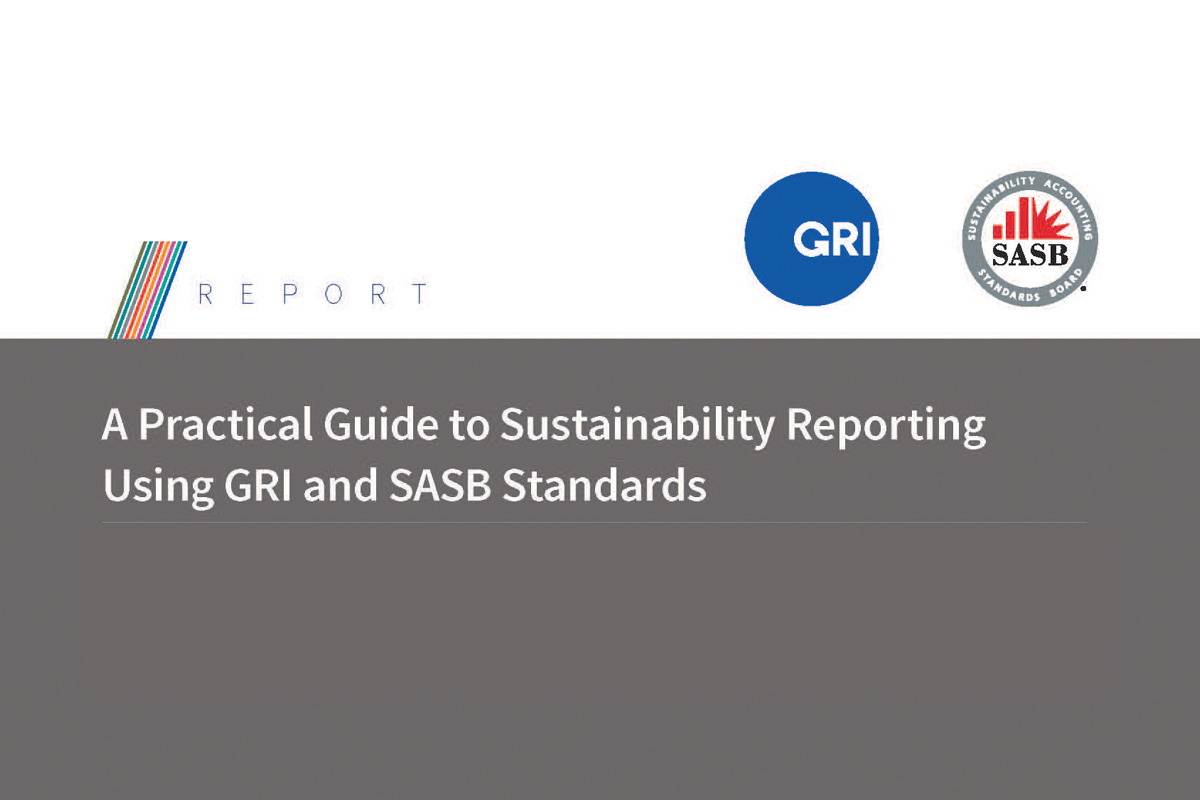GRI and SASB reporting ‘complement each other’
Published date: 08 April 2021

Practical guide shares experiences of using both sets of standards together
Joint research from the Global Reporting Initiative (GRI) and the Sustainability Accounting Standards Board (SASB) explores the experiences of companies that use the two sets of standards together to fulfil their reporting needs.
A Practical Guide to Sustainability Reporting Using GRI and SASB Standards is based on extensive interviews with four global companies: UK-based Diageo, City Developments Limited (CDL) of Singapore, US-headquartered General Motors (GM), and Canada’s Suncor Energy. All four are long-term GRI reporters that now also report with SASB. Their insights are supplemented by survey findings with 132 business representatives around the word.
The publication overviews the similarities and distinctions between the standards – covering materiality, the type and scope of disclosures, audiences and the standard setting process – and indicates how they can be used together to meet the needs of a broad range of users.
Key themes from the research include:
- Each set of standards complements rather than substitutes the other, with GRI supporting broad and comprehensive disclosures on organizational impacts and SASB focusing on a subset of financially material issues
- Using the GRI and SASB Standards together can offer a holistic picture of corporate performance, bringing sustainability and financial information more closely together
- Reporting with GRI and SASB can meet the needs of a broad range of stakeholders, with expanded disclosure to increase user engagement
- Taken together, GRI and SASB Standards offer a company a practical approach to reflect on and disclose their material issues and impacts
Eric Hespenheide, GRI Chairman, said:
“GRI is wholly committed to helping the thousands of organizations around the world that use the GRI Standards to do so in a way that delivers transparency, helps them progress on their sustainability journey, and reduces unnecessary reporting burden. Therefore, I welcome the findings of this research, showing that GRI and SASB reporting are complementary.
By sharing practical experiences, we are enabling companies to determine the sustainability reporting path that is right for them, based on the needs of their stakeholders. I believe it will improve understanding of the differences between GRI and SASB Standards and, importantly, ways in which they can be used concurrently.”
Janine Guillot, CEO of SASB, said:
“This joint research demonstrates how companies successfully use the GRI and SASB Standards to provide the depth and breadth of disclosure that their many stakeholders, including investors, require. The GRI and SASB Standards have unique and complementary roles within a global and comprehensive corporate reporting system. Our progress towards this system is abetted by developing a common language and practical insights, as offered by this joint paper.”
Insights provided by interviewees from the four companies include:
It's valuable to use both GRI and SASB and it doesn't need to be difficult… These frameworks are a really good acid test for you as a business, to make sure that you are tackling issues which you should be thinking about.”
Harriet Howey, Global Non-Financial Reporting and ESG Lead, DiageoI look at SASB as if it's a subset of information that's already within GRI. I also don't buy any company’s argument that it's too onerous… GRI drives the discussion and the narrative about how a company is managing the material issues to all stakeholders, where SASB is more focused purely on financial materiality.”
Sharon Basel, Senior Manager, Sustainability Reporting and ESG Strategy, GMGRI is larger scope, more global, not as sector specific; and then with SASB, you're able to dive deeper on sector-specific information with a financial lens… Each has benefits around helping you boost sustainability performance and around improving communications.”
Hilary Schumacher, Sustainability Reporting Advisor, Suncor EnergyWe created a blended reporting framework that combines GRI, IIRC, SDG and SASB standards. In an ever-changing business landscape, companies need to remain limber and anticipate the changing expectations of their stakeholders.”
Esther An, Chief Sustainability Officer, CDLThe practical guide was produced with support from the ClimateWorks Foundation, PwC, and the Impact Management Project.
The publication is the result of a joint GRI-SASB project that was announced in July 2020. The aim is to provide materials to help companies and the consumers of sustainability data understand the similarities and differences in the reporting created from the GRI and SASB Standards.
The source material for this resource is from a combination of interviews with reporters using both sets of standards; report examples from interviewed companies’ reports; and the results of a survey of users of GRI and/or SASB Standards. Of 132 responses, 52 were from those that use both sets of standards.